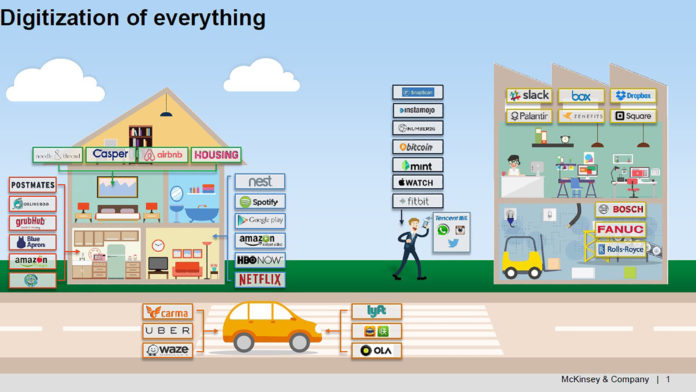
That’s what business owners are feeling. In fact, there’s historically high optimism around the nation’s economy according to the latest PNC survey. Just for context and to discern what’s real in today’s headlines—fear, despair and anger remain in the single digits. Just saying.
In the months ahead, large numbers of businesses plan to hire more full-time staff and increase wages. Those same businesses expect continued sales growth, as well as the latitude to raise prices. To make a perfect bookend set, consumer sentiment is the highest since 2004.
This is all great news, especially in light of the recent tech reset and trade war rumors.
Next year will mark a full decade of economic expansion, the longest in American history. This grand experiment of a nation is alive and well, even though sometimes seemingly unbearable bumps seem to threaten our very core.
Real estate, including multifamily housing, has long been deemed the backbone of the country. It continues to be the largest sector in its generation of GDP, even ahead of the government (is that even possible?)
A new report from the U.S. Department of Commerce’s Bureau of Economic Analysis (BEA) confirms that: 1. Real estate, rental and leasing, leads the country in share of total gross domestic product and 2. the digital economy is quickly overtaking all else.
The report entitled, “Defining and Measuring the Digital Economy,” shows the digital economy as the seventh largest producer of total gross domestic product, accounting for $1,209.2 billion of GDP in 2016. The digital sector also supports over 5.9 million jobs.
Our digital world is only beginning to unfold. Like a teenager, we’re far from knowing what we don’t know, and in such a vacuum, prognosticators proliferate.
The digital economy as defined by BEA is infrastructure, ecommerce and digital media. But because it is also an interesting and notable companion to all else, the BEA numbers could also be seriously understated. The fact remains that the digitization of our nation is, as yet, an incomplete project. Some industries have only begun the march toward digitization, such as multifamily housing. As such, it is probably not fully calculated into the report’s analysis.
Nevertheless, the fact remains we are about to be transformed like at no other time in history. You’ve already heard this. Perhaps even too much. There’s a lot of hype. But there’s still much truth.
Here’s why. The digital economy is outpacing the total economy, not just a little, but a lot: Between 2005 and 2016, output in the digital economy grew 5.6 percent per year. Annual growth in total U.S. gross domestic product (GDP), by contrast, was just 1.5 percent.
One reason for this growth is the cost of digital versus non-digital economies. They are moving in opposite directions. In other words, while prices in the overall U.S. economy between 2005 and 2016 rose at a modest 1.8 percent per year, prices in the digital economy fell 1.7 percent per year.
We’re all scrambling to find meaningful insights buried in the avalanche of big data that continues to grow in our midst. We have far to go to before we feel the full impact on our lives to which these insights give rise.
One thing we know for sure is that the biggest creator of GDP—including multifamily housing—will someday soon meet this nascent giant.













